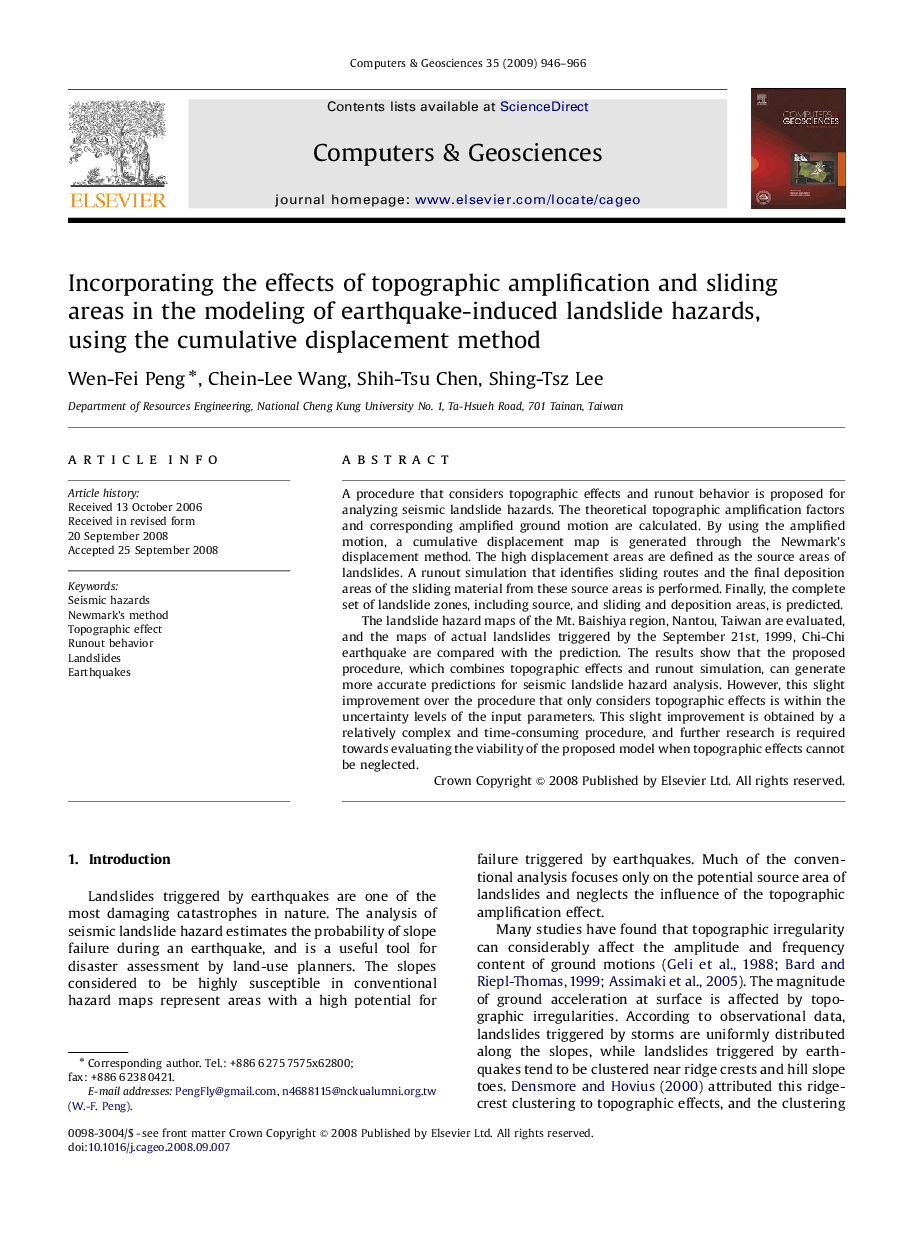| Article ID | Journal | Published Year | Pages | File Type |
|---|---|---|---|---|
| 507663 | Computers & Geosciences | 2009 | 21 Pages |
A procedure that considers topographic effects and runout behavior is proposed for analyzing seismic landslide hazards. The theoretical topographic amplification factors and corresponding amplified ground motion are calculated. By using the amplified motion, a cumulative displacement map is generated through the Newmark's displacement method. The high displacement areas are defined as the source areas of landslides. A runout simulation that identifies sliding routes and the final deposition areas of the sliding material from these source areas is performed. Finally, the complete set of landslide zones, including source, and sliding and deposition areas, is predicted.The landslide hazard maps of the Mt. Baishiya region, Nantou, Taiwan are evaluated, and the maps of actual landslides triggered by the September 21st, 1999, Chi-Chi earthquake are compared with the prediction. The results show that the proposed procedure, which combines topographic effects and runout simulation, can generate more accurate predictions for seismic landslide hazard analysis. However, this slight improvement over the procedure that only considers topographic effects is within the uncertainty levels of the input parameters. This slight improvement is obtained by a relatively complex and time-consuming procedure, and further research is required towards evaluating the viability of the proposed model when topographic effects cannot be neglected.
